
Jethro Tull are a British rock band formed in Blackpool, Lancashire in 1967. Initially playing blues rock and jazz fusion, the band soon incorporated elements of English folk music, hard rock and classical music, forging a signature progressive rock sound. The group's founder, bandleader, principal composer, lead vocalist, and only constant member is Ian Anderson, a multi-instrumentalist who mainly plays flute and acoustic guitar. The group has featured a succession of musicians throughout the decades, including significant contributors such as guitarists Mick Abrahams and Martin Barre ; bassists Glenn Cornick, Jeffrey Hammond, John Glascock, Dave Pegg, Jonathan Noyce, and David Goodier; drummers Clive Bunker, Barrie "Barriemore" Barlow and Doane Perry; and keyboardists John Evan, Dee Palmer, Peter-John Vettese, Andrew Giddings, and John O'Hara.
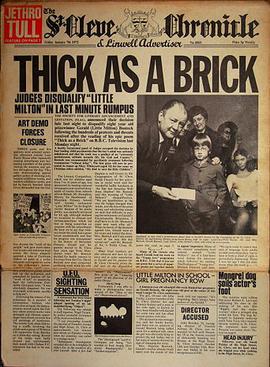
Thick as a Brick is the fifth studio album by the British rock band Jethro Tull, released on 3 March 1972. The album contains one continuous piece of music, split over two sides of an LP record, and is intended as a parody of the concept album genre. The original packaging, designed as a 12-page newspaper, claims the album to be a musical adaptation of an epic poem by fictional eight-year-old genius Gerald Bostock, though the lyrics were actually written by the band's frontman, Ian Anderson.

Aqualung is the fourth studio album by the English rock band Jethro Tull, released in March 1971 by Chrysalis Records. Though it is generally regarded as a concept album, featuring a central theme of "the distinction between religion and God", the band have said there was no intention to make a concept album, and that only a few songs have a unifying theme. Aqualung's success signalled a turning point in the career of the band, who went on to become a major radio and touring act.
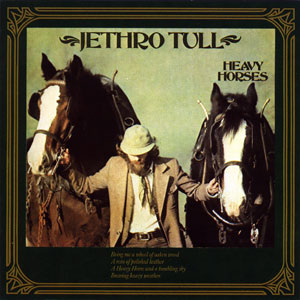
Heavy Horses is the eleventh studio album by British progressive rock band Jethro Tull, released on 10 April 1978.

A is the 13th studio album by British rock band Jethro Tull. It was released on 29 August 1980 in the UK and 1 September of the same year in the United States.

Ian Scott Anderson is a British musician best known for his work as the singer, flautist, acoustic guitarist, primary songwriter, and sole continuous member of the rock band Jethro Tull. He is a multi-instrumentalist who also plays harmonica, keyboards, bass guitar, bouzouki, balalaika, saxophone and a variety of whistles. His solo work began with Walk into Light in 1983; since then he has released another five albums, including the sequel to the 1972 Jethro Tull album Thick as a Brick, titled TaaB 2: Whatever Happened to Gerald Bostock? (2012).

Roots to Branches is the 19th studio album by the British band Jethro Tull released in September 1995. It carries characteristics of Tull's classic 1970s progressive rock and folk rock roots alongside jazz and Arabic and Indian influences. All songs were written by Ian Anderson and recorded at his home studio. This is the last Tull album to feature Dave Pegg on the bass, and the first to feature keyboardist Andrew Giddings as an official band member, although he had contributed to Catfish Rising (1991) on a sessional basis. As a result, the album notably features the five longest serving members to date in Jethro Tull’s history. It was also the final Tull album to be released through long-time label Chrysalis Records.
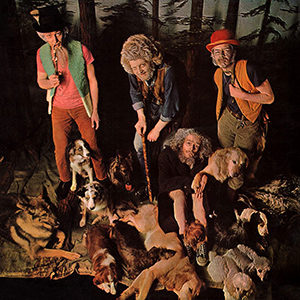
This Was is the debut studio album by the British rock band Jethro Tull, released in October 1968. Recorded at a cost of £1200, it is the only Jethro Tull album with guitarist Mick Abrahams, who was a major influence for the sound and music style of the band's first songs. When the album was released the band were performing regularly at the Marquee Club in London, where other successful British groups, such as the Rolling Stones and the Who, had started their careers.

Benefit is the third studio album by the British rock band Jethro Tull, released in April 1970. It was the first Tull album to include pianist and organist John Evan – though he was not yet considered a permanent member of the group – and the last to include bass guitarist Glenn Cornick, who was fired from the band upon completion of touring for the album. It was recorded at Morgan Studios, the same studio where the band recorded its previous album Stand Up; however, they experimented with more advanced recording techniques.
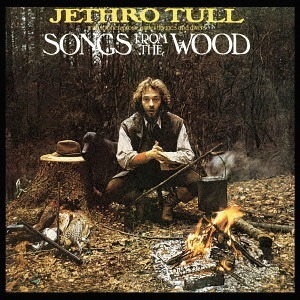
Songs from the Wood is the tenth studio album by British progressive rock band Jethro Tull, released on 11 February 1977 by Chrysalis Records. The album is considered to be the first of three folk rock albums released by the band at the end of the 1970s, followed by Heavy Horses (1978) and Stormwatch (1979).

Martin Lancelot Barre is an English guitarist best known for his longtime role as lead guitarist of British rock band Jethro Tull, with whom he recorded and toured from 1968 until the band's initial dissolution in 2011. Barre played on all of Jethro Tull's studio albums from their 1969 album Stand Up to their 2003 album The Jethro Tull Christmas Album. In the early 1990s he began a solo career, and he has recorded several albums as well as touring with his own live band.
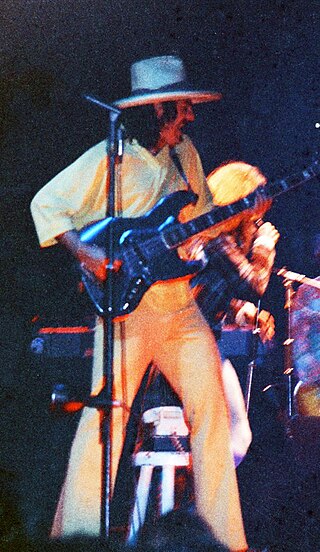
Jeffrey Hammond, often known by his former stage name Jeffrey Hammond-Hammond, is an English artist and former musician best known for being the bassist of progressive rock band Jethro Tull from 1971 to 1975. With Jethro Tull, Hammond played on some of the band's most successful and well-known albums, including Aqualung (1971) and Thick as a Brick (1972).
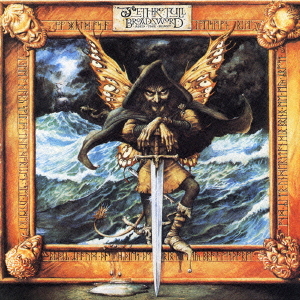
The Broadsword and the Beast is the 14th studio album by rock band Jethro Tull, released in April 1982 by Chrysalis Records. The album's musical style features a cross between the dominant synthesizer sound of the 1980s and the folk-influenced style that Jethro Tull used in the previous decade. As such, the band's characteristic acoustic instrumentation is augmented by electronic soundscapes. The electronic aspects of this album would be explored further by the band on their next album, Under Wraps (1984), as well as on Ian Anderson's solo album Walk into Light (1983).

Crest of a Knave is the sixteenth studio album by British rock band Jethro Tull, released in 1987. The album was recorded after a three-year hiatus caused by a throat infection of vocalist Ian Anderson, resulting in his changed singing style. Following the unsuccessful electronic rock album Under Wraps, Crest of a Knave had the band returning to a more hard rock sound. The album was their most successful since the 1970s and the band enjoyed a resurgence on radio broadcasts, appearances in MTV specials and the airing of music videos. It was also a critical success, winning the 1989 Grammy Award for Best Hard Rock/Metal Performance Vocal or Instrumental in what was widely viewed as an upset over the favorite, Metallica's ...And Justice for All. The album was supported by "The Not Quite the World, More the Here and There Tour".
Michael Timothy Abrahams is an English guitarist and band leader, best known for being the original guitarist for Jethro Tull from 1967 to 1968 and the frontman for Blodwyn Pig.

Bourrée in E minor is a popular lute piece, the fifth movement from Suite in E minor BWV 996 written by Johann Sebastian Bach between 1708 and 1717. The piece is arguably one of the most famous among guitarists.

Living in the Past is a double LP compilation album by Jethro Tull, released in 1972. It collects album tracks, outtakes and several standalone singles spanning the band's career up to that point. Also included are the 1971 "Life Is a Long Song" EP and two live recordings taken from a performance at New York City's Carnegie Hall in November 1970.

"Living in the Past" is a song by British progressive rock group Jethro Tull. It is one of the band's best-known songs, and it is notable for being written in the unusual 5
4 time signature. The use of quintuple meter is quickly noted from the beginning rhythmic bass pattern, though it can also be explained as a distinct 6
8 + 2
4 syncopated rhythm.
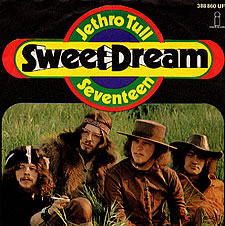
"Sweet Dream" is a song recorded by the English rock band Jethro Tull on 31 August 1969, at Morgan Studios, London. It was their second straight UK Top Ten single, reaching number 7 in the UK singles chart. The b-side was a non-album track, "17", recorded on 11 September 1969, also at Morgan. It later appeared as a bonus track on remastered versions of Stand Up. "Sweet Dream" has appeared on many Tull compilation albums, while "17" has been rarely seen. In the UK, the single was the first release on Chrysalis Records.

"The Witch's Promise" is a single by the British rock band Jethro Tull, released in January 1970, on the Chrysalis label. It reached No. 4 in the UK Singles Chart, and was promoted by an appearance on the British chart show Top of the Pops. The B-side was "Teacher", an alternate version of which later appeared on the US release of the album Benefit. In the U.S., the single was released on the Reprise label.



















